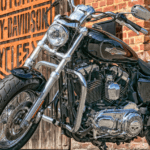
The Importance of Safety Features in Cars and Bikes
Consumer perception of safety features in cars and bikes has evolved significantly over the years. In the past, people may have primarily focused on factors such as speed, style, and fuel efficiency when making a vehicle purchase. However, as awareness about road accidents and their consequences has increased, safety has taken center stage.
One of the key reasons why safety features are so important in vehicles is that they can significantly reduce the risk of injuries and fatalities in the event of a crash. Modern cars and bikes are equipped with a wide range of safety technologies that work together to protect occupants and minimize the impact of a collision.
For example, cars now come with advanced braking systems, such as anti-lock braking systems (ABS), that prevent the wheels from locking up during sudden braking. This allows the driver to maintain control of the vehicle and reduces the risk of skidding or losing control. Additionally, many cars are equipped with electronic stability control (ESC), which helps to prevent the vehicle from sliding or spinning out of control during cornering or sudden maneuvers.
In terms of passive safety features, vehicles are now built with high-strength materials and advanced crumple zones that absorb and distribute crash forces away from the occupants. This helps to minimize the risk of serious injuries in the event of a collision. Furthermore, airbags have become standard in most vehicles and are designed to deploy rapidly and cushion the impact for the occupants.
When it comes to bikes, safety features have also come a long way. In addition to wearing helmets and protective gear, modern bikes are equipped with features such as anti-lock braking systems, traction control, and electronic rider aids. These technologies help to improve stability, control, and overall safety while riding.
Aside from the obvious benefits of safety features in protecting occupants, they also play a role in reducing insurance premiums. Insurance companies take into account the safety features of a vehicle when calculating premiums. Vehicles with a higher safety rating and more advanced safety features are generally considered to be less risky, resulting in lower insurance costs.
Overall, the importance of safety features in cars and bikes cannot be overstated. They provide peace of mind to drivers and riders, knowing that they are well-protected in the event of an accident. As technology continues to advance, we can expect to see even more innovative safety features being incorporated into vehicles, further enhancing road safety for everyone.
1. Peace of Mind
One of the main reasons why consumers value safety features in cars and bikes is the peace of mind they provide. Knowing that your vehicle is equipped with the latest safety technologies can give you confidence and reassurance while driving or riding. Safety features such as airbags, anti-lock braking systems (ABS), and stability control systems can greatly reduce the risk of accidents and injuries.
Imagine yourself driving on a busy highway, surrounded by speeding cars and unpredictable drivers. In such a situation, having safety features in your vehicle can be a source of immense relief. You know that if something unexpected happens, your car’s airbags will deploy, protecting you and your passengers from serious injuries. The anti-lock braking system ensures that even in emergency situations, your car will maintain stability and prevent skidding, allowing you to maintain control and avoid collisions.
Moreover, safety features are not limited to protecting you in the event of an accident. They also play a crucial role in accident prevention. For example, advanced safety technologies like lane departure warning systems and blind-spot detection systems can alert you if you unintentionally drift out of your lane or if there is a vehicle in your blind spot. These features act as an extra set of eyes, helping you stay aware of your surroundings and avoid potential dangers.
Furthermore, the peace of mind that safety features provide extends beyond just the driver. If you have a family, knowing that your vehicle is equipped with top-notch safety features can give you the assurance that your loved ones are protected. Whether it’s your spouse, children, or elderly parents, their safety is always a top priority. Safety features like rearview cameras and collision warning systems can help prevent accidents while parking or reversing, ensuring that everyone remains safe inside and outside the vehicle.
In addition to physical safety, the peace of mind that safety features offer also extends to financial security. Accidents can be costly, both in terms of medical expenses and vehicle repairs. Having safety features in your car or bike can significantly reduce the severity of injuries and damage, potentially saving you from financial burdens.
In conclusion, the peace of mind that safety features provide is invaluable. It allows you to focus on enjoying your journey, knowing that you have taken every precaution to protect yourself and your loved ones. Whether it’s the advanced technologies that assist you in avoiding accidents or the protective measures that minimize the impact of a collision, safety features are essential for a worry-free driving or riding experience.
2. Protection in Case of Accidents
No one wants to think about getting into an accident, but the reality is that it can happen to anyone. That’s why having safety features in your car or bike is crucial. Features like crumple zones, reinforced frames, and impact-absorbing materials can help absorb and distribute the force of a collision, minimizing the risk of severe injuries. In addition, advanced safety systems like lane departure warning, blind-spot detection, and automatic emergency braking can help prevent accidents from occurring in the first place.
When it comes to protection in case of accidents, the design and engineering of vehicles have come a long way in recent years. Manufacturers are constantly striving to improve safety measures to ensure the well-being of drivers and passengers. Crumple zones, for example, are strategically placed areas in a vehicle that are designed to absorb the impact of a collision. These zones are typically located in the front and rear of the vehicle and are constructed with materials that deform and crumple upon impact, effectively absorbing and dissipating the force of the crash. This helps to reduce the transfer of energy to the occupants of the vehicle, minimizing the risk of severe injuries.
Reinforced frames are another important safety feature that provides protection in case of accidents. These frames are designed to be sturdy and rigid, providing a strong structure that can withstand the forces exerted during a collision. By distributing the impact forces throughout the frame, the risk of structural failure and passenger compartment intrusion is significantly reduced. This means that even in the event of a severe crash, the occupants of the vehicle are better protected.
Moreover, the use of impact-absorbing materials further enhances the safety of vehicles. These materials, such as high-strength steel and aluminum alloys, are strategically placed in areas that are prone to impact, such as the doors, pillars, and roof. By absorbing and dissipating the energy generated during a collision, these materials help to minimize the risk of injuries to the occupants.
In addition to passive safety features, advanced safety systems have become increasingly common in modern vehicles. Lane departure warning systems use sensors to monitor the vehicle’s position within the lane and provide alerts to the driver if they unintentionally drift out of their lane. This helps to prevent accidents caused by driver distraction or drowsiness. Blind-spot detection systems use sensors to detect vehicles in the driver’s blind spots and provide visual or audible warnings to prevent collisions during lane changes. Automatic emergency braking systems use sensors to detect potential collisions and automatically apply the brakes to prevent or mitigate the impact. These advanced safety systems not only provide an extra layer of protection but also help to prevent accidents from occurring in the first place.
Overall, the combination of passive safety features and advanced safety systems in vehicles has significantly improved the protection in case of accidents. Whether it’s the crumple zones that absorb and distribute impact forces, the reinforced frames that provide a strong structure, or the advanced safety systems that help prevent accidents, these features work together to ensure the safety of drivers and passengers on the road. So, while no one wants to think about accidents, it’s reassuring to know that modern vehicles are equipped with the necessary measures to minimize the risk of injuries and provide peace of mind to those behind the wheel.
3. Enhanced Visibility
Another important aspect of safety features is enhanced visibility. Being able to see and be seen by other drivers is essential for avoiding accidents. Cars and bikes with features like LED headlights, daytime running lights, and reflective materials can greatly improve visibility, especially in low-light conditions.
LED headlights have become increasingly popular in recent years due to their superior brightness and longevity. Unlike traditional halogen headlights, LED headlights produce a brighter and whiter light that closely resembles natural daylight. This not only enhances the driver’s vision but also makes it easier for other drivers to spot the vehicle on the road. LED headlights also consume less energy, which is beneficial for fuel efficiency and reducing carbon emissions.
Daytime running lights (DRLs) are another safety feature that enhances visibility during the day. These lights automatically turn on when the vehicle is in motion, making it easier for other drivers to see the vehicle, even in bright sunlight. DRLs have been proven to reduce accidents by improving the visibility of vehicles on the road, especially in situations where there may be poor weather conditions or low visibility due to fog or rain.
In addition to advanced lighting technologies, reflective materials are also used to improve visibility. Reflective strips and markings are often found on bicycles, motorcycles, and even clothing worn by pedestrians. These materials reflect light back to its source, making the person or object more visible to drivers. Reflective materials are particularly effective during nighttime or in situations where there is limited lighting, such as in rural areas or on poorly lit roads.
Furthermore, vehicles equipped with rearview cameras and parking sensors offer enhanced visibility when maneuvering in tight spaces. Rearview cameras provide a live video feed of the area behind the vehicle, allowing the driver to see any obstacles or pedestrians that may be in their blind spot. This technology greatly reduces the risk of accidents while reversing, especially in crowded parking lots or busy urban areas. Parking sensors, on the other hand, use ultrasonic or electromagnetic sensors to detect nearby objects and provide audible or visual alerts to the driver. These sensors help drivers gauge the distance between their vehicle and obstacles, making parking and maneuvering safer and less stressful.
In conclusion, enhanced visibility is a crucial aspect of safety features in vehicles. LED headlights, daytime running lights, reflective materials, rearview cameras, and parking sensors all contribute to improving visibility and reducing the risk of accidents. These technologies not only benefit the driver but also help other road users to see and react to the vehicle, ultimately making the roads safer for everyone.
4. Influence on Insurance Rates
Consumer perception of safety features in cars and bikes is not only driven by the desire for personal safety but also by the potential impact on insurance rates. Many insurance companies offer discounts for vehicles equipped with certain safety features. This can be a significant incentive for consumers to choose vehicles with advanced safety technologies, as it not only provides peace of mind but also helps save money in the long run.
Insurance rates for vehicles are determined based on various factors, including the likelihood of accidents and the potential cost of repairs. Safety features such as anti-lock braking systems (ABS), electronic stability control (ESC), and adaptive cruise control (ACC) are known to reduce the risk of accidents. As a result, insurance companies consider vehicles equipped with these features to be less likely to be involved in accidents, leading to lower insurance premiums.
For example, a car with ABS helps prevent the wheels from locking up during sudden braking, improving the driver’s ability to steer and avoid collisions. Insurance companies recognize the effectiveness of this technology in reducing accident rates and may offer discounts to policyholders who have vehicles equipped with ABS.
Similarly, ESC is designed to help drivers maintain control of their vehicles during emergency maneuvers or on slippery roads. This feature can significantly reduce the risk of skidding or losing control, making the vehicle less likely to be involved in an accident. Insurance companies may reward policyholders who have vehicles with ESC by offering lower insurance rates.
Adaptive cruise control is another safety feature that can have an impact on insurance rates. This technology uses sensors to maintain a safe distance from the vehicle ahead, automatically adjusting the speed to match the traffic flow. By reducing the likelihood of rear-end collisions, vehicles with adaptive cruise control are considered safer and may qualify for insurance discounts.
It is important to note that the availability of safety features and their impact on insurance rates may vary depending on the insurance provider and the region. Some insurance companies may offer specific discounts for certain safety features, while others may consider the overall safety rating of the vehicle. Therefore, it is advisable for consumers to check with their insurance providers to understand the specific discounts and benefits associated with safety features.
In conclusion, the influence of safety features on insurance rates is a significant factor in consumer decision-making. The potential cost savings and the added peace of mind provided by these features make them highly desirable for vehicle owners. As technology continues to advance, it is expected that insurance companies will increasingly recognize the value of safety features and provide further incentives for their adoption.
5. Resale Value
Safety features can also have a positive impact on the resale value of a vehicle. When selling or trading in a car or bike, having safety features can make it more attractive to potential buyers. In today’s market, where safety is a top concern for consumers, vehicles with advanced safety technologies tend to hold their value better than those without.
One reason for this is the increasing demand for vehicles that prioritize safety. With the rise in accidents and road fatalities, buyers are becoming more conscious of the safety features in the vehicles they purchase. As a result, vehicles equipped with features such as adaptive cruise control, lane departure warning, blind-spot monitoring, and automatic emergency braking are highly sought after in the resale market.
Moreover, insurance companies also recognize the importance of safety features and often offer lower premiums for vehicles equipped with them. This further adds to the appeal of vehicles with advanced safety technologies, as buyers can save on insurance costs in addition to having a safer driving experience.
Another factor contributing to the higher resale value of vehicles with safety features is the overall perception of reliability and quality associated with these vehicles. When a vehicle is equipped with advanced safety technologies, it implies that the manufacturer has invested in research and development to ensure the highest level of safety for its customers. This perception of quality and reliability translates into a higher resale value, as buyers are willing to pay more for a vehicle that they believe will provide them with a safe and reliable driving experience.
Furthermore, as technology continues to advance, newer safety features are constantly being introduced to the market. This means that vehicles without these advanced safety technologies quickly become outdated and less desirable in the resale market. Buyers are more likely to choose a vehicle that offers the latest safety features, even if it means paying a higher price.
In conclusion, safety features not only enhance the overall driving experience and reduce the risk of accidents but also have a significant impact on the resale value of a vehicle. With the increasing demand for safety in the market, vehicles equipped with advanced safety technologies hold their value better and are more attractive to potential buyers. Investing in a vehicle with safety features not only provides peace of mind but also ensures that you will have a valuable asset when it comes time to sell or trade-in your vehicle.
Add a comment Cancel reply
Categories
- automobile (1)
- Automotive (32)
- Automotive Industry (2)
- Automotive Safety (1)
- Car Brands (1)
- Car Buying (1)
- Car Reviews (1)
- Clean Energy (1)
- Marketing (1)
- Motorcycles (1)
- Trade Agreements (1)
- Transport & Mobility (1)
- Transportation (2)
- Travel (2)
Recent Posts
About us









